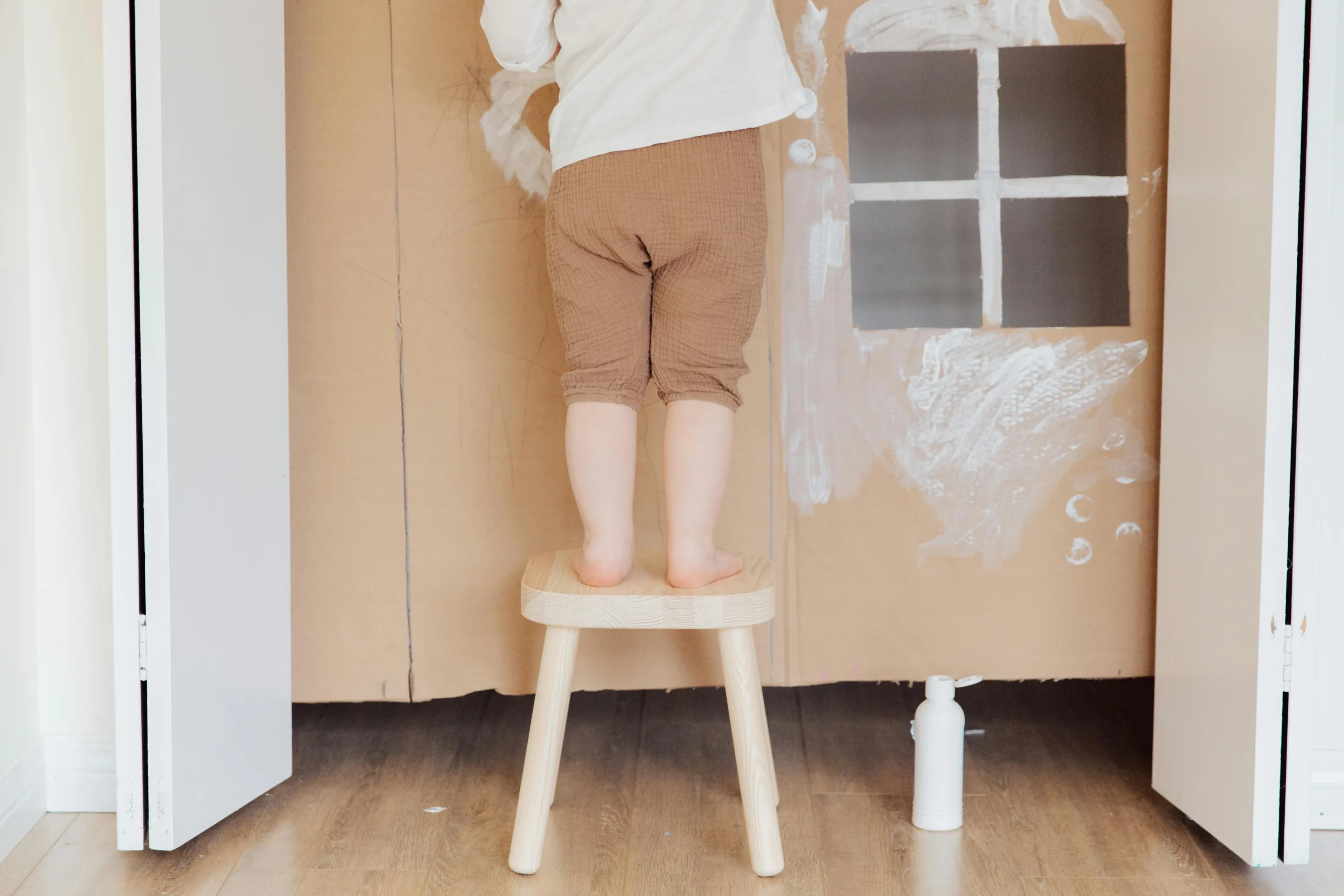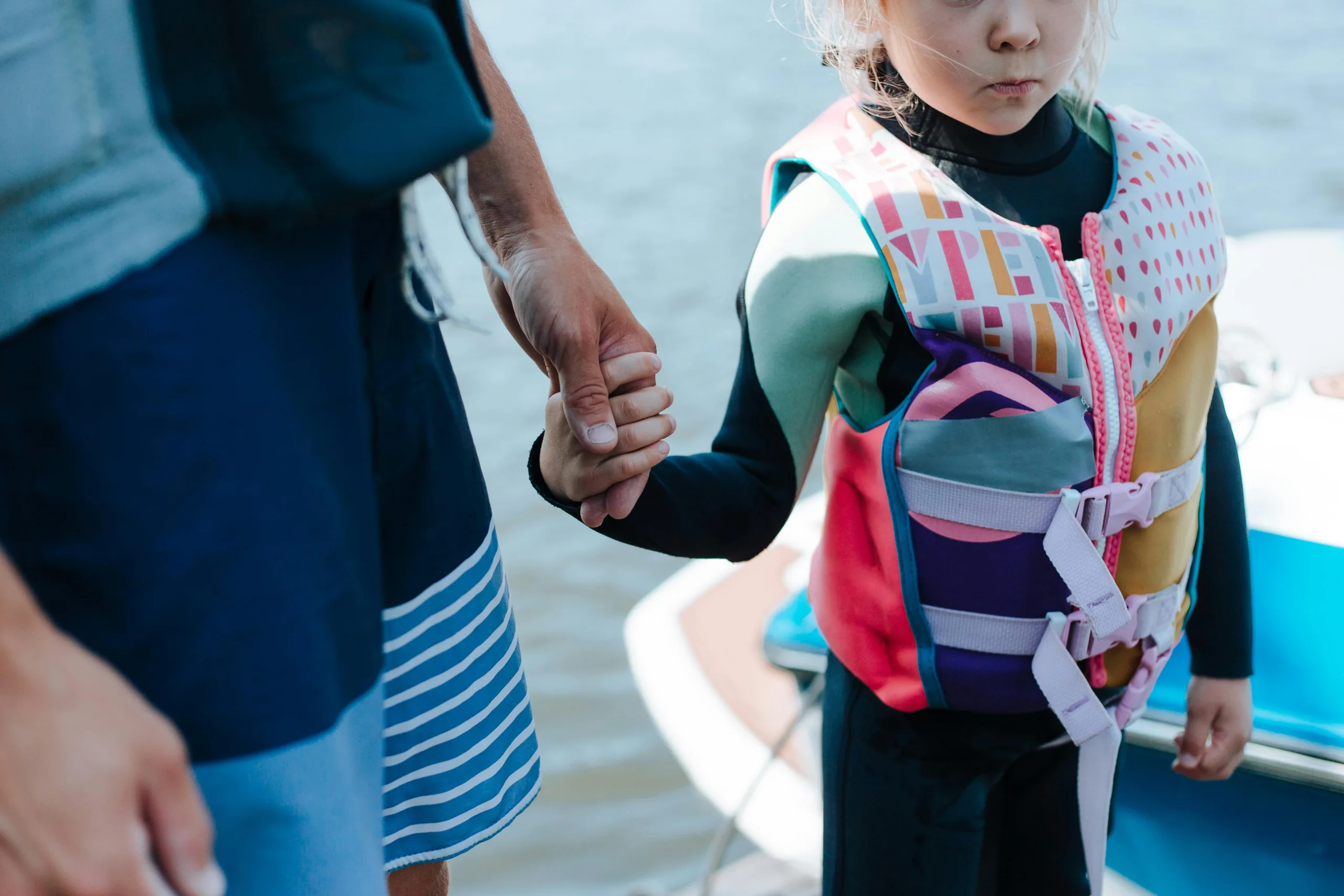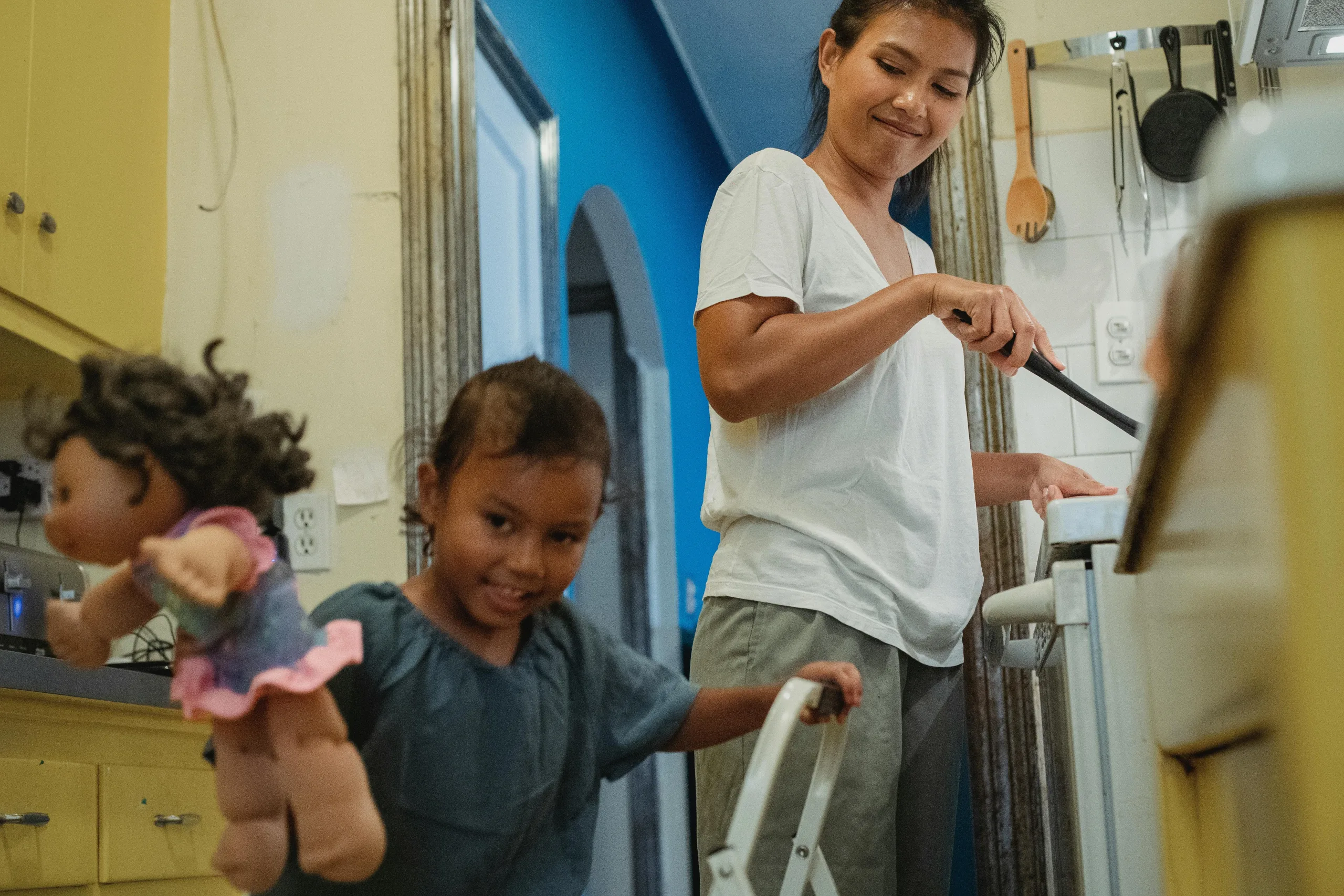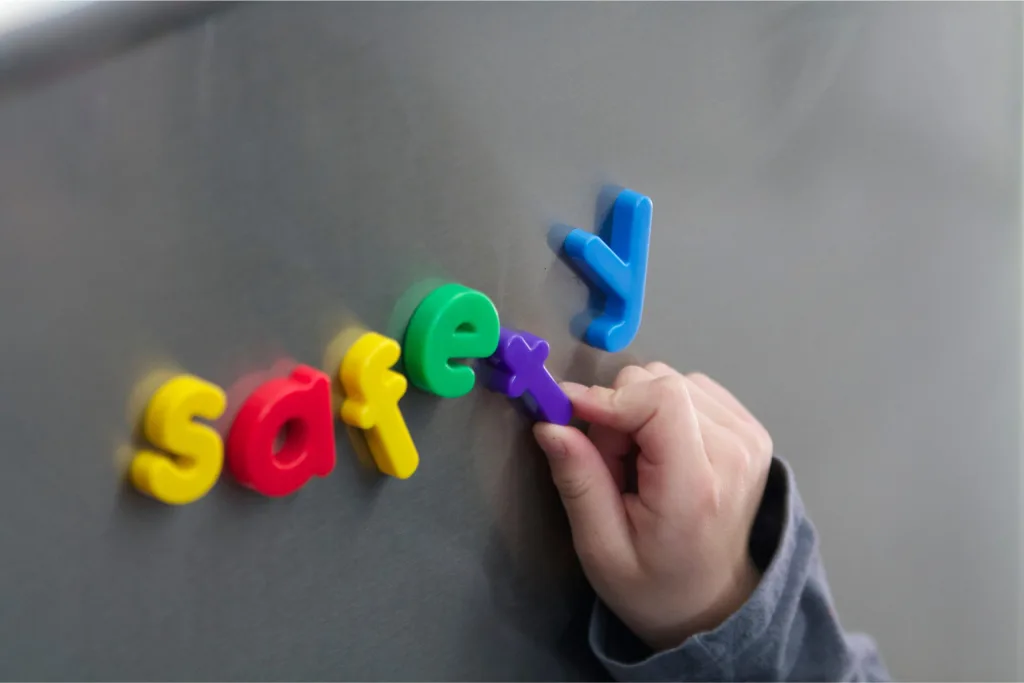When people think of child safety at home, they often think of baby-proofing their home. But I’m here to tell you there’s no such thing as kid-proof or even toddler-proof.
So how can parents keep their home safe for kids? Well, you could always just buy an inflatable human hamster ball and keep your kids in a bubble all the time! 😂
(Or, consider how hosting an Au Pair can be that bubble for your kids!)
While you might not be able to keep out of your children’s reach, practical household safety tips can help parents confidently minimize potential hazards.
Child Safety Starts in the Home
Considering child safety, the average home has dangers in every room, not to mention outdoors. Risks can lurk in unexpected places, from plastic bags in the kitchen to an untended lawn mower in the front yard. Here are some house safety tips to get you started.
First, assess your home with an eye for child safety. Look for things that are potentially dangerous in the home, such as sharp edges, loose cords, or unlocked cabinets containing household products. Think about how enticing hazards might appear to a small child.
Note: Drowning, poisoning, and suffocation are among the top causes of death in children in the United States. Installing smoke detectors, carbon monoxide detectors, and even an alarm system can significantly reduce risks and provide an additional layer of protection for your family members.
Second, make changes or purchase products with child safety options. Many products exist, so do some research before you buy.
Third, educate your children about safety at home from the earliest age. Teach them to stay away from the stove, avoid playing near the front door, and understand the dangers of small objects that pose a choking hazard. Use a very serious tone of voice when telling your baby something is dangerous. Even if he or she doesn’t understand your words, they will get the message.
Finally, be ever vigilant about child safety at home and in public. Do regular checks of your child’s room, play and living areas. Hazards that weren’t there five minutes ago can appear like magic, especially if you have older kids. Consistently using a checklist of house safety tips can help ensure no risks go unnoticed.
Household items and areas that can endanger your child’s safety:
Electrical outlets
Safety tips for home security are constantly updated, with new solutions replacing outdated ones. Even traditional outlet covers, once a staple, are now considered less effective—toddlers can easily remove them, turning them into choking hazards in addition to leaving the outlet open. Sliding outlets on top of tamper-resistant outlets may be the best combination of child safety products for this application.
Bookshelves or anything climbable
All large furniture and shelving should come with child safety brackets and be mounted to the wall. Even with this effort, a determined toddler can climb to dangerous heights. From the floor, small children can pull things off shelves or anything they can reach.
Anything breakable
Get into the habit of keeping all breakables up high and away from the edge of counters and tables. Babies love to grab at anything above their heads, not realizing how dangerous they can be. Adding safety measures at home, such as securing tablecloths or using non-slip pads, can help reduce the risk of accidental falls or breaks.
Cords that dangle
Secure any electrical cords with clips, found in the child safety area of most department stores. Tie up strings from blinds and shades, not just near the baby’s crib.
Doors that slam on fingers
Pinch guards are available for interior doors. Obviously, not all doors can be removed; some families find it the safest option. Here is where constant vigilance is required, even with the simplest act of shutting a door. Adding house safety rules, like teaching older children to open and close doors gently, can prevent tiny fingers from getting bruised.
Oven, stove, fireplace
Establish house rules to prevent burns. One great one is no running in the kitchen. Teach your child safety rules to anyone who cares for your kids at home, including grandparents. Adults need to take extra care when moving hot liquids, making sure kids are not underfoot.
Water
I cannot say enough about water safety and child safety. Inside the house, be sure to turn down your water heater. Close the toilet cover and shut the bathroom door until your child is old enough to use the bathroom with supervision. In the yard, ponds and pools should be fenced or gated. Provide age-appropriate life jackets, and teach kids to swim but never walk away from children near water. 
Hard, heavy, or broken toys
Older kids’ toys can harm child safety for younger siblings. Be sure older kids put away heavy and hard toys that are away from the reach of babies and toddlers. Throw away any toys with broken, jagged, or sharp edges.
Wire hangers
Loose hangers can jeopardize child safety. Their tiny, sharp points can injure eyes and scratch baby skin, and they fit nicely into uncovered electrical outlets. Keep wire hangers on closet rods.
Knife blocks & other sharp objects
Keep knife blocks and scissors inside the cabinet, out of reach of little fingers, until kids understand the danger. Regularly reviewing safety tips at home can ensure they remain appropriate for the child’s age. My kids learned to safely use knives, starting with butter knives, from a young age. Older kids may think it’s okay to use knives. Be sure to teach them to place used knives safely out of reach of younger siblings.
Garage
Your garage is full of toolsets, saws, car antifreeze, all hazards to child safety. Be sure to keep garage doors shut, tools put away, and unsupervised children out of there!
Small parts lying around
When thinking about child safety, don’t forget how much kids love to put everything in their mouths. Children can choke on anything that can fit through a toilet paper tube! This includes bottle caps, older kids’ toys (like Legos), erasers, pen caps, and a million other items you have in your home.
Additionally, children can easily choke on foods such as nuts and grapes. It’s advisable to crush nuts and cut grapes in half (long ways) until your child’s trachea has grown larger, usually around age 5.
Au Pairs can support parents in ensuring child safety at home
Host Parents work with their Au Pairs to determine daily tasks. Child safety is one of the most important things to address with your Au Pair immediately.
Even with daily checks of each room for child safety at home, more dangers exist. Adults caring for kids need to remain vigilant and continuously apply household safety tips to reduce risks.
Small children need to be taught not to open doors or leave the house alone. Parents and caregivers cannot be there every second but must minimize any unsupervised time. Utilize playpens or cribs when you need to “contain” the baby while you shower or use the bathroom.
Host Families usually care most about child safety, and parents and Au Pairs must keep this at the forefront of their minds daily.
Host Parents can help ensure child safety by completing the Host Family Success Workbook. Several sections address safety in the home and in general. Child safety should also be addressed in daily or weekly communication and meetings.
Parents get peace of mind when they know their child is safe. With open communication, clear expectations, and a focus on these household safety tips, both parents and Au Pairs can ensure kids are safe and happy!
Ready to create a safe, nurturing home for your kids? Find an Au Pair today and gain a partner in keeping your children safe!



